Entering Jordan From Israel: COVID Updates
The latest wave of Corona is waning and after two long years, borders are finally beginning to open around the world. The Middle East is no exception and as of this month, restrictions are easing considerably if you want to travel to Israel and Jordan. Moreover, travelling between Israel and Jordan - which was almost impossible in the last 24 months - is quickly becoming easier, whether you want to make the trip independently or as part of an organised tour to Petra from Eilat.
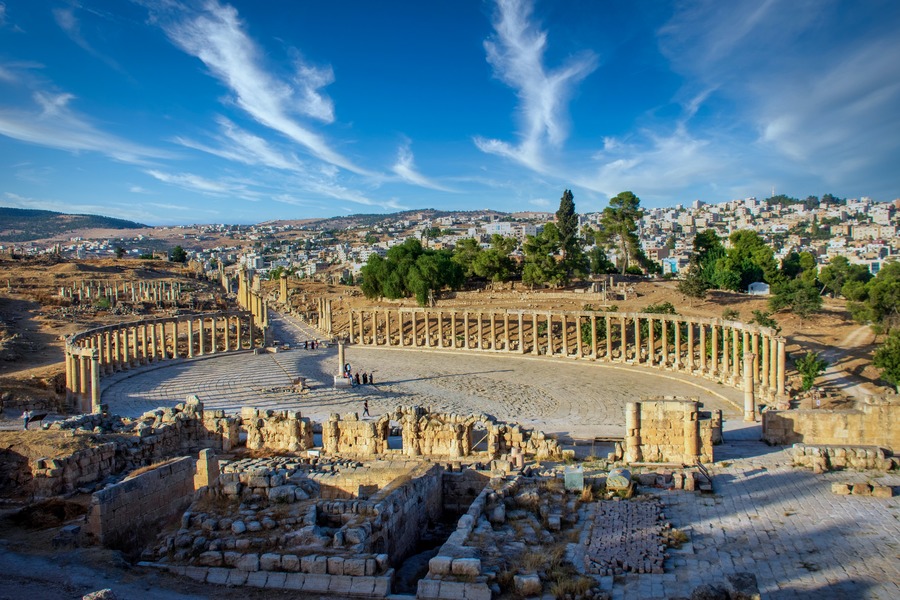
The ruins in Jerash, Jordan. Photo by Hisham Zayadnh on Unsplash
Even better, the political situation is quite stable. We are often asked "Is it safe to travel to Israel?" and "Is it safe to travel to Jordan?" and at this moment we can say, without equivocation, ‘Yes!’. Today we’ll be looking at the basics, like visa requirements, Border Crossings and COVID regulations on your Israel and Jordan Tour.
How Can I Get to Jordan?
Essentially you have two options - air or land. There was once a train from Damascus to Amman, running over part of the famous Hedjaz Railway lines, but it has not operated since 2006. So it’s up to you whether you choose to fly in internationally or cross at one of the three Israel and Jordan border crossings (Allenby Bridge, Wadi Araba and Sheikh Hussein border).
What are the latest Covid 19 Procedures for entering Jordan?
The good news is that travel restrictions have eased considerably. That being said, there are still requirements that you must adhere to if you want to travel to Jordan or make a specific trip to Petra. These include:

Piper in Petra, Jordan. Photo by Hisham Zayadnh on Unsplash
2. Before departing for Jordan, ensure that you register online at the Visit Jordan platform. Fill in all of the details that are asked of you. You will then be issued a confirmation, continuing a QR code. Do not lose this QR code. Without it, you will not be allowed to enter the country. (For your information, children under the age of 5 do not need to have a form filled out for them).
3. As of March 2022, no pre-departure test is required for a trip to Jordan.
4. When you arrive in Jordan, you will be asked to hand over your confirmation, along with the QR code that was sent to you by the Visit Jordan platform. As of this moment, no PCR or Antigen test is required on arrival.

Woman tourist in Petra, Jordan. Photo by Alex Vasey on Unsplash
Where do visitors fly into, when travelling to Jordan?
The airport that almost everyone flies into when visiting Jordan, is the Queen Alia International Airport in Amman, the capital of the country. It is a modern facility and you can either take a taxi or public bus from it to the city centre. If you have come to Jordan specifically to visit Petra, and don’t want to spend time in the capital, then there are several ways to make the journey:
1. Private transfer - the most comfortable way to make the journey is with a driver, and rather than negotiate with cab drivers at the airport, it is advisable to book a private transfer in advance.
2. JETT bus - this is a decent option if you don’t want the expense of a private taxi but want a little comfort. The buses are air-conditioned and run on a schedule - they leave at 6.30 am from the capital and take about 3.5 hours (including a toilet stop). The return bus leaves Petra at 5 pm. You can book a ticket online or in person at the JETT office.
3. Local minibuses - this is the cheapest way to make the journey. These are 10-seater vans and leave from central Amman, but they only depart when the van is full, so be prepared to wait a while!
4. Car rental from the airport - expect to pay about 25-30 JOD (35-43 USD) per day for a new model car with insurance and air conditioning.
5. There is also a smaller airport located in Aqaba (on the Red Sea), named the King Hussein International Airport. This operates flights to tourist destinations such as Milan, Geneva, London, Athens and Berlin. From there, you can take a private transfer directly to Petra or a local minibus (see above) from the Aqaba city centre.

Walking in Wadi Rum Desert, Jordan. Photo by Andrea Leopardi on Unsplash
What is the best way to get to Jordan?
Choosing your method of transport when travelling from Israel to Jordan involves a few considerations. If time is of the essence, and you are arriving from Europe, then taking a flight to Amman or Aqaba is a good option. However, if you have a little more time and energy to expend, and want to go directly from Israel to Petra, it’s quite simple to travel overland from Israel, using one of the three border crossings.
We would recommend the southernmost one - Wadi Araba - because it is the most modern, takes the least time to cross and is close to the city of Aqaba, from which you can continue easily either to Petra, Wadi Rum or Amman.
Can anyone visit Jordan?
Jordan's entry requirements are reasonably liberal, compared to some countries in the Middle East, and although they tightened up during the pandemic, they are easing significantly now. Citizens of almost every nation are allowed to visit Jordan, although not all of them can enter visa-free. That’s where the visa part (below) comes in…
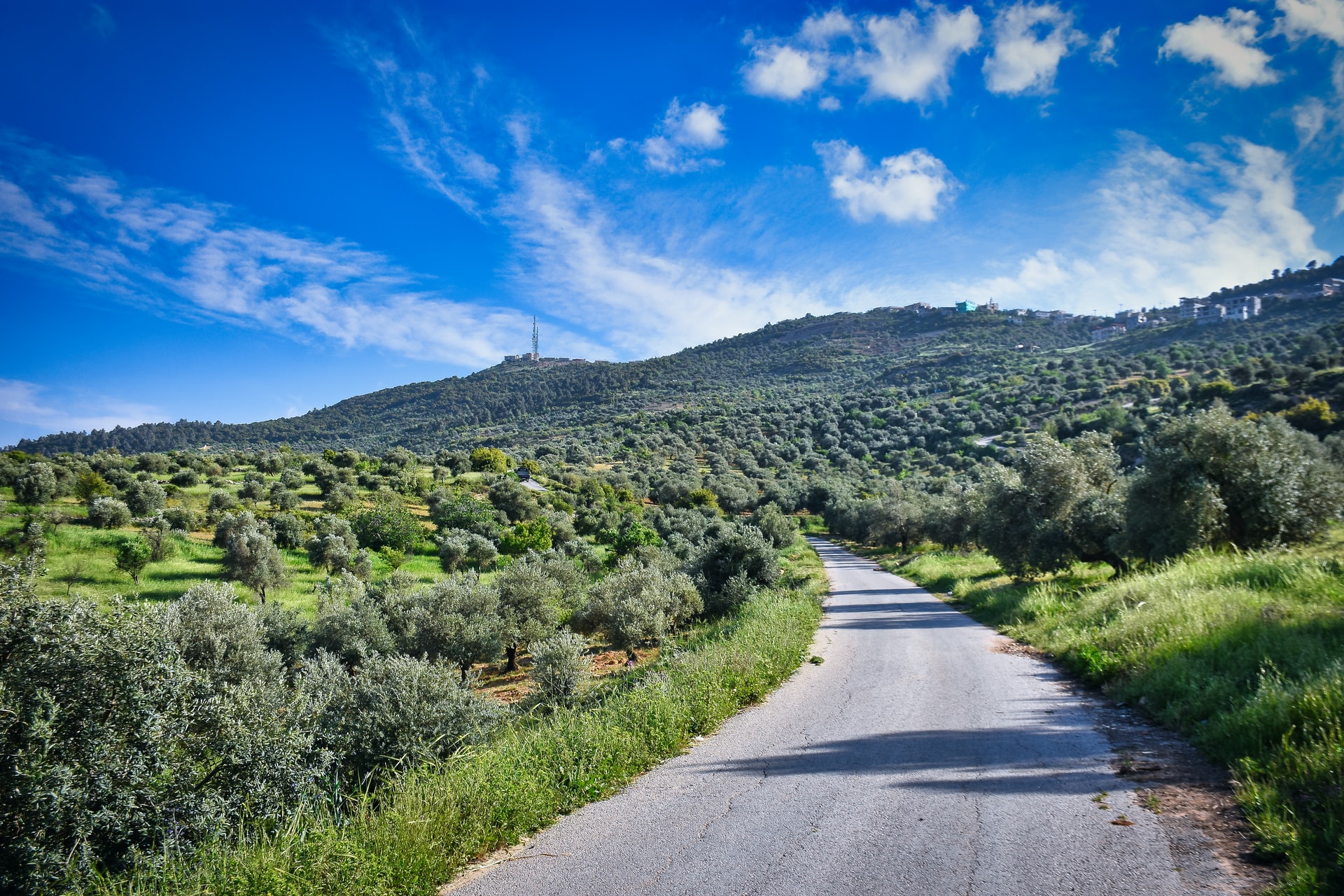
Jerash, Jordan. Photo by Hisham Zayadnh on Unsplash
Do I need a visa to enter Jordan?
The answer is yes, a visa is usually required if you want to travel to Jordan. However, the good news is that it is easily obtainable and can be purchased at the border crossing itself. So obtaining a visa for Jordan is not too difficult.
For most tourists of Western countries, all this entails is ensuring you have a passport that is valid for at least six months beyond the time you are planning to stay, and at least two blank pages in your passport that officials will be able to use for stamps. For citizens of other countries, including South Africa, Indonesia, Ecuador, and also states that make up the Gulf Cooperation Council (GCC), visa-free travel is granted from anywhere between one and three months.
How much does a visa for Jordan cost?
At the current moment, the cost of a single-entry visa for Jordan, valid for one month, is 40 Jordanian dinars (JOD) which works out to approximately 56 USD. A double-entry visa, which is valid for three months, will cost you 60 JOD (approx. 84 USD) and multiple-entry visas cost 120 JOD (approx. 170 USD ).
Visas can be purchased on arrival at the airport or at two of the three border crossings - Sheikh Hussein (in Israel’s north) and Wadi Arava (in Eilat). If you want to cross into Jordan from the Allenby Bridge border, you will need to arrange your visa beforehand, preferably in Jerusalem or Tel Aviv.

Petra at night, Jordan. Photo by Gabor Koszegi on Unsplash
How many hours does it take to get to Jordan from Israel?
This depends on which part of Israel you are leaving from. If you are in the north of the country, you can cross at the Sheikh Hussein border near Beit Shean then make your way south via Irbid to Amman (and then onto Petra or Wadi Rum). You will need to allow at least 7-8 hours for this journey and maybe even longer if you are venturing beyond the capital. If you leave Nazareth on the Nazarene Express at 8 am, you should hopefully be in Amman by 3 pm.
If you are travelling from Tel Aviv, you will need to head south to Eilat, which you can do either by domestic flight, rental car or Egged bus. A flight with Arkia or Israir takes around 50 minutes and will take you to the Eilat Ramon Airport, just 15 minutes drive to Eilat or a straight 20 minutes drive to the Wadi Arava border.
If you are renting a car in Israel and driving from Tel Aviv or Jerusalem to Eilat, it should take about 4 hours without traffic. However, please note that you cannot take a rental car into Jordan, so you will have to leave it either in Eilat or at the car parking lot close to the border terminal (a daily fee applies).
If you are travelling by Egged bus, allow 5 hours or so for the journey from the country’s centre. Once you have arrived at the Eilat Central Bus Station, either take a taxi to the border (around 40 NIS / 12,5 USD) or the hourly public bus, which is 5 NIS (1,5 USD) and drops you about 1 km from the border (if you have heavy luggage or it is the height of summer, we don’t advise doing this!)
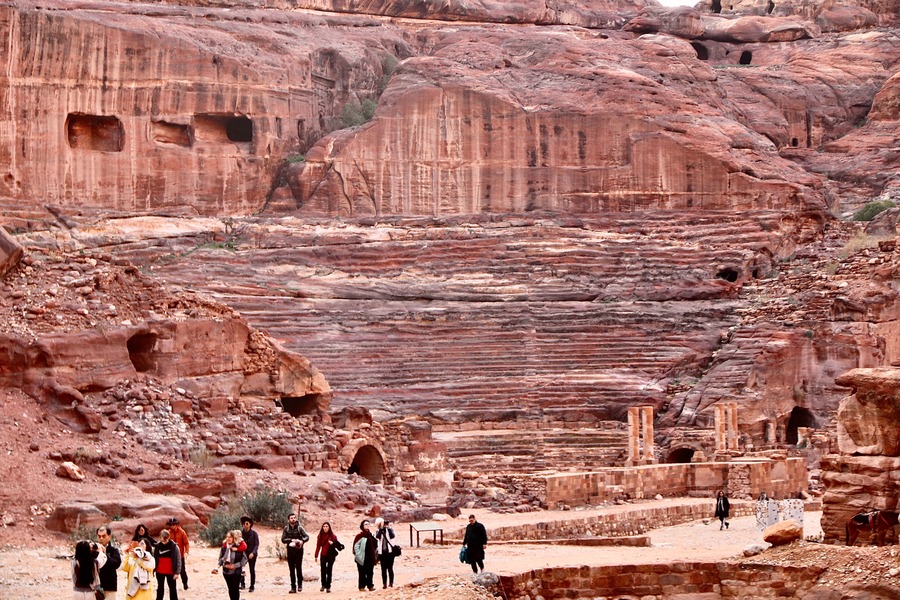
Petra, Wadi Musa, Jordan. Photo by Jorge Fernández Salas on Unsplash
Because of the time, it takes to travel between Aqaba and Petra, this means that day trips to Petra from Eilat are currently not available. We hope this will change towards the end of this month, hopefully on 22nd March 2022.
However, if you have a little more time at your disposal, then it’s certainly possible to visit Petra straightaway, in which case we would suggest a 3 or 4-day trip to Jordan, giving you a chance not just to see one of the Seven Modern Wonders of the World but also take in the magnificent desert scenery of Wadi Rum (made famous by Lawrence of Arabia) with optional jeep tour and Bedouin campfire dinners.

Petra Treasury, Jordan. Photo by Michael Starkie on Unsplash
Travelling from Eilat to Petra
The easiest and most stress-free way to visit Petra is undoubtedly with an organised tour. When you travel in a group, you will have an Arabic/English-speaking guide on hand at all times, who can help with any queries or problems that arise. Your guide to the site itself and transport between Israel and Petra will all be taken care of so you can get on with the business of enjoying yourself.
This includes being picked up from your hotel in Eilat, helping with all of the formalities in crossing the border at Wadi Araba and then ensuring you have a smooth journey directly to Wadi Musa, where Petra is situated. Before Corona struck, there were several options if you wanted to visit the Rose-Coloured City, including day trips, two-day trips to Petra, and trips directly from Tel Aviv to Petra and these are now being booked again - don’t hesitate to contact us for more information about them.
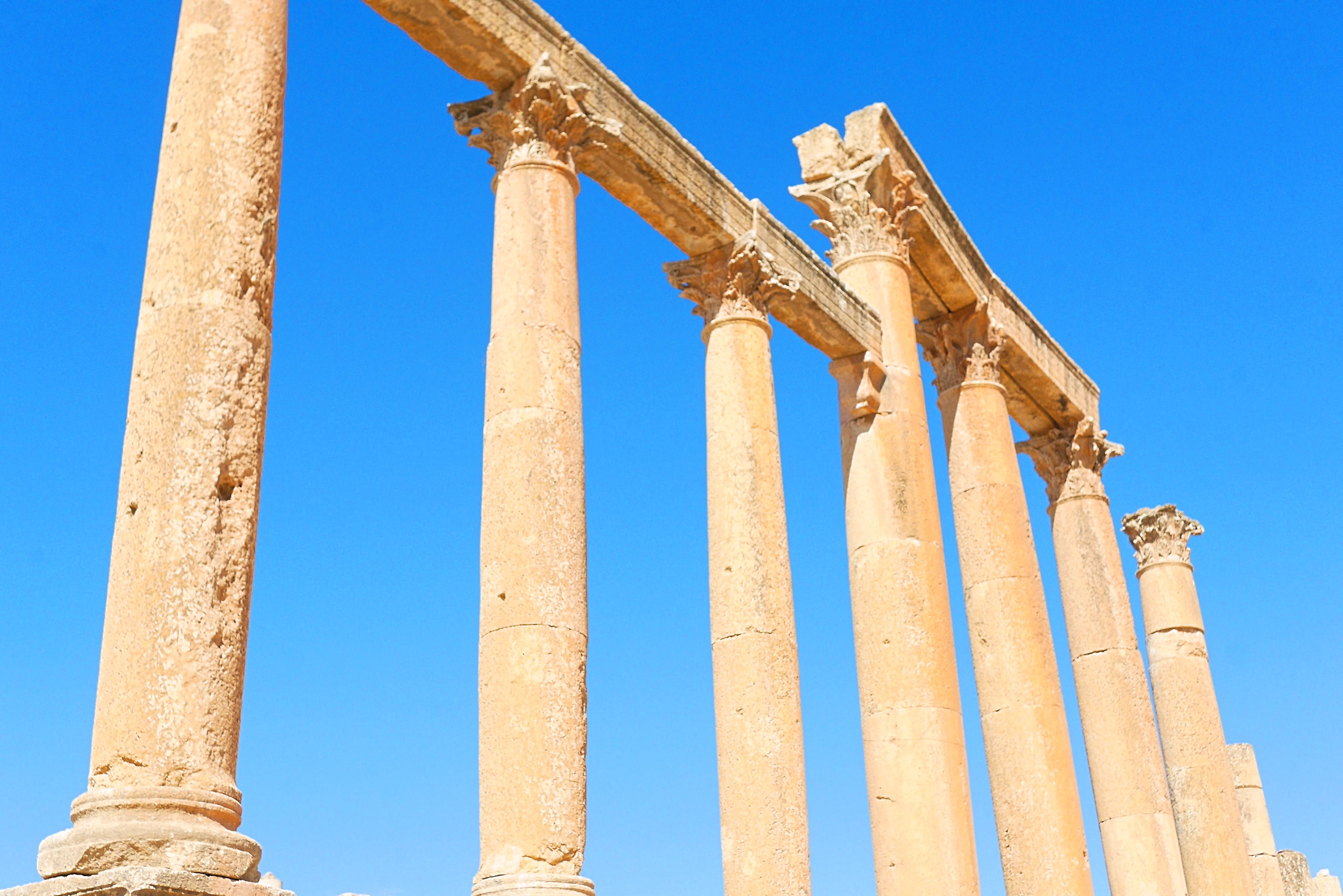
The ruins of the Gerasa outside the modern city of Jerash, Jordan. Photo by Hannah Wernecke on Unsplash
Returning to/Entering Israel from Jordan
If you are returning to Israel from Jordan (after a trip, say, to Petra or Wadi Rum) or simply entering Israel for the first time, there are certain procedures you are going to need to follow, by the current Israeli COVID-19 regulations. These are as follows:
1. You will need to take a PCR test no more than 72 hours before you fly or cross over. Antigen tests are not acceptable.
2. Passengers returning to Israel after a 3-day Jordan tour do not require a PCR test before departure from Jordan, as they will have a PCR test which was performed on arrival to Jordan which will be valid for their return within 72 hours.
3. Passengers returning to Israel after a 4-day Jordan tour require a PCR test before departure from Jordan, which can be conducted at their own expense. We will assist passengers to arrange for the test to take place in time for their departure. (Cost = 20 Jordanian Dinar (approx. US$30) per person to be paid on-site.
4. After you have taken your test, you must complete the Online Entry Statement at the Israeli Health Ministry's website, not more than 48 hours before you plan to arrive in Israel. Once this has been completed, as long as the Israeli government permits you to enter, you will be issued an electronic confirmation.
5. When you arrive in Israel, you must take a PCR test at your own expense. (This test is in addition to the Pre-Departure PCR test that you must take in Jordan, before departing to Israel). This requirement currently applies to all tourists arriving in Israel. Once you have completed the online Entry Statement (see above) you will receive a link at which you can order and pre-pay for this PCR test. If you do not pay for it in advance, you can take it either at Ben Gurion Airport or at the Wadi Arava border on the Israeli side (where you will probably be crossing, if you have come from Petra).

A tourist at the Treasury in Petra, Jordan. Photo by Jorge Fernández Salas on Unsplash
6. After taking this arrival PCR test, you should then travel directly to your hotel/private accommodation and stay there, in isolation, until you receive confirmation that the test is negative, or for 24 hours (whichever is earlier). Finally, please bear in mind that all the details in this article are correct as of 8th March 2022.Of course, the situation with COVID-19 is in constant flux, and so these regulations are subject to change at any moment, without prior notice. We advise that you check these regulations with the Israeli and Jordanian government websites respectively, before travelling, and if you are taking a day tour or overnight tour to Petra, stay in regular touch with your tour operator in the days before you are due to depart.
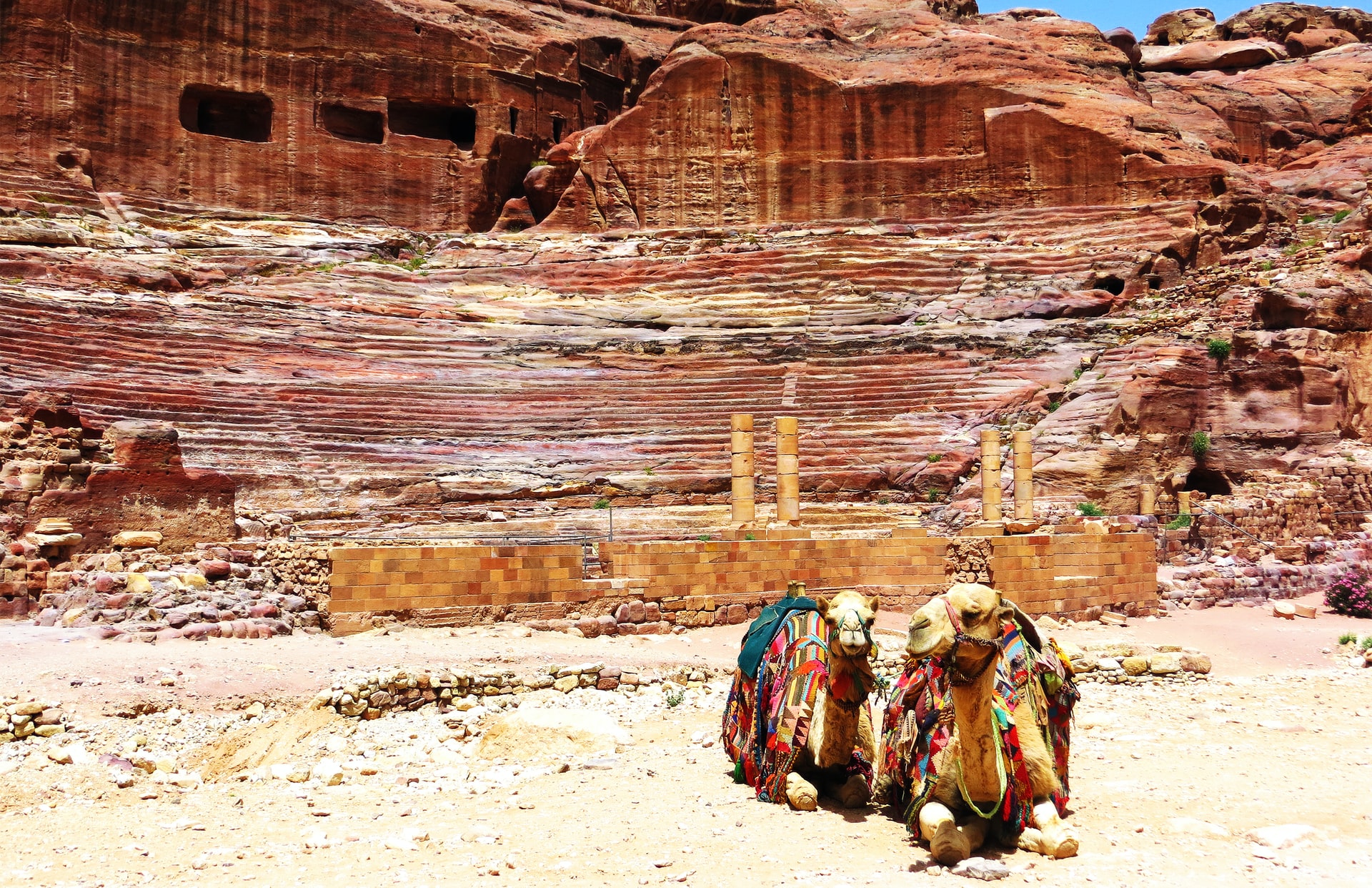
Two camels look on as they wait in front of the ruins of a Roman amphitheatre in Petra, Jordan. Photo by Callie Joseph on Unsplash
 Login / Register
Login / Register
 Contact Us
Contact Us
 Certificate of Excellence
Certificate of Excellence Guaranteed Departure
Guaranteed Departure Low Prices Guaranteed
Low Prices Guaranteed 24/7 Support
24/7 Support




